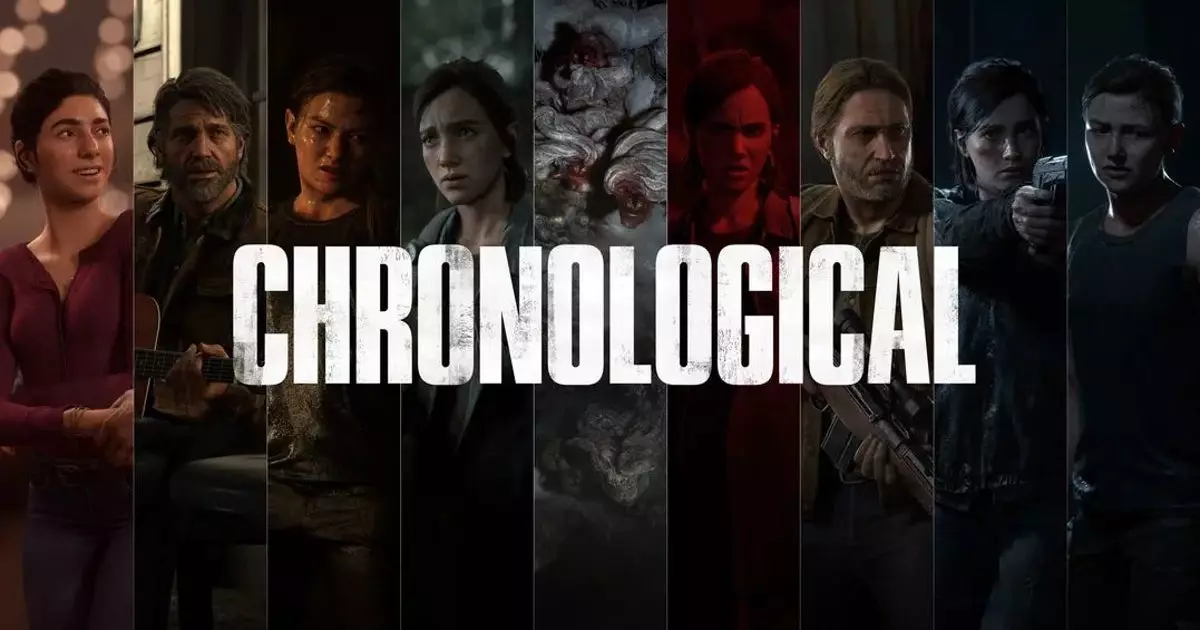In an era where storytelling is often perceived as an art form that relies heavily on suspense, flashbacks, and non-linear structures, Naughty Dog’s decision to offer a chronological mode for *The Last of Us Part II Remastered* raises eyebrows—and for good reason. The move signifies a willingness to toy with narrative conventions, essentially inviting players to experience a story they might have already internalized differently. While the studio claims this mode promises “deeper insight,” it’s crucial to analyze whether such a reordering genuinely enhances understanding or simply undermines the storytelling craftsmanship that originally captivated fans.
The core of the issue involves a tension between narrative depth and narrative integrity. The developers argue that chronological play reveals how moments are interconnected—how Ellie’s gift of the guitar seamlessly transitions into her learning music, or how Ellie and Abby’s parallel journeys intertwine in ways that non-linear storytelling obscures. Yet, the question arises: does forcing a linear timeline dilute the emotional resonance created by the original structure? Or does it serve as a misguided attempt to breathe new life into a narrative that was intentionally crafted for aesthetic and thematic complexity? Considering that the original game’s non-linear approach was fundamental to its emotional impact, flipping it around might turn well-crafted storytelling into a flat, predictable parade of events.
Freedom or Folly? The Risks of Over-Simplification
This new mode risks stripping away the deliberate ambiguity that makes the game compelling. Non-linear timelines create a sense of puzzle and discovery, allowing players to piece together characters’ motivations over time. By imposing chronological order, the game loses this layer of intrigue, potentially turning its powerful revelations into banal, straightforward sequences. It’s akin to reading a novel’s climax first; the surprise, the emotional payoffs, all diminish when stripped of their narrative scaffold.
Moreover, this decision seems symptomatic of a broader trend—an obsession with accessibility and “foolproof” narratives at the expense of nuanced storytelling. The assertion that this mode provides “more insight” assumes that players need a tidier, more logical path to appreciate the story. But isn’t part of the game’s messaging about chaos, moral ambiguity, and emotional turmoil that storylines don’t always follow a neat order? Simplifying that complexity can undercut the very themes that made the game resonate so deeply.
Naughty Dog’s gamble also raises questions about artistic integrity. If they suggest that newcomers should avoid the chronological mode, it implies that the original story is already a delicate, sophisticated construct—one that might be compromised or misinterpreted in a different viewing order. Is this not a tacit acknowledgment that the game’s narrative architecture is fragile? Or worse, that it’s a puzzle best not disturbed?
From Innovation to Distraction: The Broader Impact on Gaming Narratives
The addition of a “cosplay as Drake brothers” feature further exemplifies the studio’s questionable priorities. It’s a superficial gimmick in a game that arguably already pushes boundaries—yet, here it feels more like a distraction from the core narrative experience. The crux of the controversy is whether such features serve players’ understanding or simply trivialize the story.
The comparison to a “Dunkirk: The Chronological Cut” or “Memento forwards” is not merely humorous; it’s a reflection of the absurdity that can arise when narrative experimentation veers into spectacle for its own sake. True storytelling innovation involves understanding the delicate balance between structure and meaning, not just rearranging scenes like a puzzle to impress or confuse. Naughty Dog’s approach seems to lean toward the latter—treating narrative as a flexible commodity rather than a carefully woven fabric.
While some may argue that giving players agency over how they experience a story enriches engagement, this decision risks turning *The Last of Us Part II* into a puzzle box rather than a compelling emotional journey. Good stories are not just about the sequence of events but about the emotional through-lines that connect them. Disrupting that flow, even with good intentions, can diminish the story’s impact and reduce its characters to mere shells of their former selves.
In the end, Naughty Dog’s move reflects a broader tension in modern game development: the desire to innovate versus the need to respect narrative continuity. While experimentation is commendable, it must serve the story, not disrupt it in ways that alienate or diminish the audience’s experience. As much as curiosity might beckon us to explore this new mode, it’s essential to remain critical of whether such “fascinating” experiments contribute meaningfully or merely complicate what was once a masterful piece of storytelling craftsmanship.

